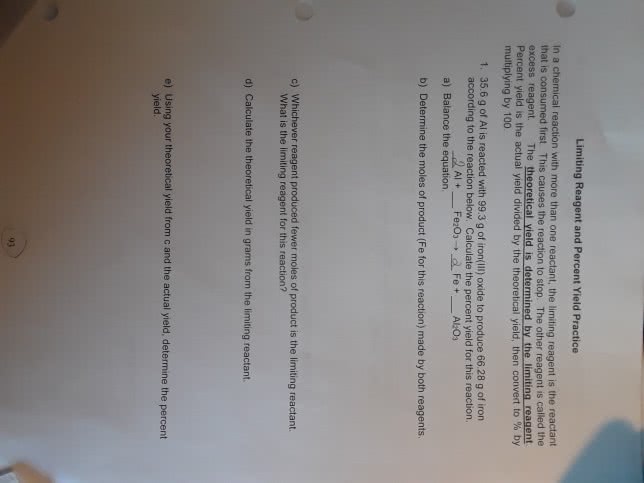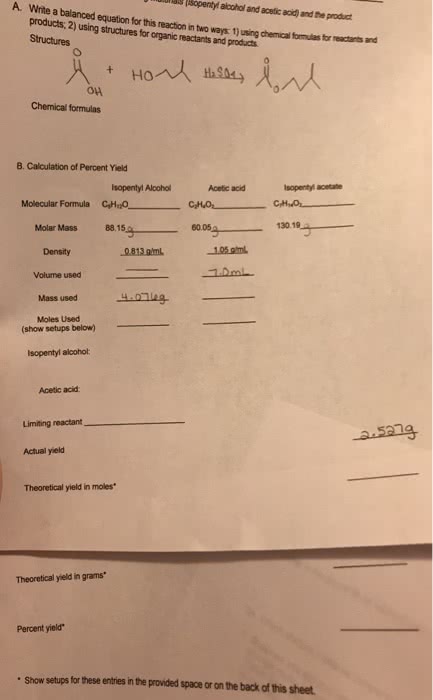CHEM 001 Lecture Notes - Lecture 3: Limiting Reagent, Molar Mass, Acetylene
Document Summary
2. make sure the chemical equation is balanced. 3. know the molar mass of each reactant and product. 5. compare calculated moles to the required moles to determine the limiting reactant. 6. by looking at the chemical equation, calculate the moles of product that can be formed. 7. convert product moles to grams to get theoretical (maximum) yield. Actual yield is always less than theoretical yield. Ex: solid calcium carbide, cac2, reacts with water to form aqueous ca(oh)2 and ethyne gas c2h2. Cac2(s) + 2 h2o(l)-> ca(oh)2(aq) + c2h2(g) Cac2 64. 10 g/mol, h2o 18. 02 g/mol, c2h2 26. 038g/mol. After calculating molar mass: cac2=1. 56 mol, h2o=5. 55 mol the limiting reactant is cac2 since we only need 3. 12 mol h2o. 1. 56 mol c2h2 x 26. 038 g/mol = 40. 6 g the base si units are: Make sure all units are the same during calculations.



